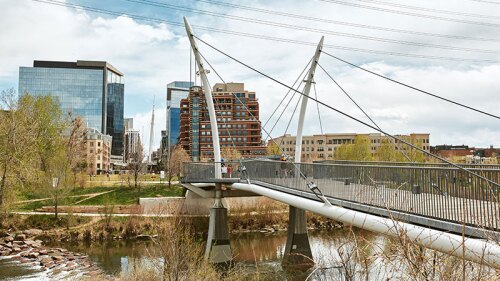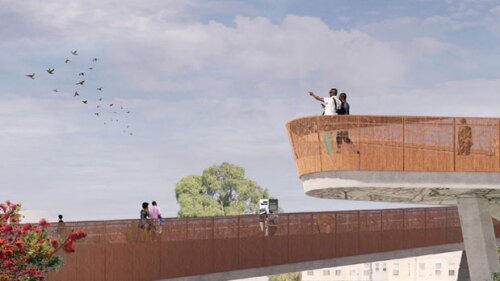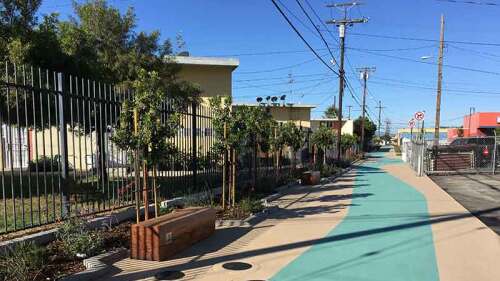|
Life Between Buildings: Using Public Space
2011. 200 pages. $54 paperback.
Cities for People
2010. 283 pages. $49.95 hardcover.Jan Gehl
Island Press, 1718 Connecticut Avenue, NW, Suite 300,
Washington, DC 20009-1148;
www.islandpress.org.
Because of the continued appeal of his unfettered approach to pedestrian-based design and the growing demand for his firm’s consulting work, Copenhagen architect and urban designer Jan Gehl has become something of an international celebrity. Perhaps that is why Island Press has recently released not one, but two of his books. Life Between Buildings is more or less a reprint of his first text published in Danish in 1971 and subsequently translated into 19 languages. Cities for People was cited by the popular city planning website Planetizen as one of its top ten selections for 2010.
The real story behind both books harkens back to the year after Jane Jacobs’s book Life and Death of Great American Cities turned the mindset of urban planning upside down. In fall 1962, Gehl and his like-minded peers succeeded, despite vehement resistance from commercial interests, in a radical plan to convert Copenhagen’s longest shopping street, Strøget, to a car-free zone. Their stunning victory spawned a gradual succession of street closings that ultimately led to the reconfiguration of central Copenhagen into a pedestrian-dominated precinct. Additional government-sponsored measures included the long overdue elimination of parking from the city’s medieval squares and the curtailment of off-site parking.
Gehl and his students at the Royal Academy of Fine Arts decided to continue monitoring changes in street-level activity through on-site traffic counts and user interviews. By the mid-1990s, the evidence proved conclusive: the number of people in downtown Copenhagen had more than tripled, and the amount of ground-level public space had increased by a factor of six. By then, other cities in Denmark and elsewhere in western Europe had instituted their own car-free zones.
“Life between buildings, the people and events that can be observed in a given space, is a product of the number and duration of individual events,” Gehl writes in the first book. The attributes and characteristics of the ritual stroller, the frontyard gardener, the babysitter, the walker with a cane, the lunchtime sunbather, the edge-of-plaza idler, and the everyday cyclist are what matter most. Like colonies of lions, ants, and penguins, urban humans respond in predictable ways to elements of visual scale, wind, sunlight, and sound—and perhaps most of all, to the attraction of daily walkabouts of fellow humans. These are the central themes espoused by Gehl since he first began studying Copenhagen’s streets and squares. And had the small-scale vitality of city spaces not been overwhelmed by the auto, perhaps the need to put these thoughts into words would not have been as compelling.
Life Between Buildings deals mostly with Copenhagen and other cities of northwestern Europe and Italy. The reach of Cities for People is global, with glances at city life in places as varied as Dubai and Cape Town, South Africa. Both books attempt to use the power of street scene photography to its best advantage, but the grainy black-and-white images of the 1970s are no match for the dazzling color images of today. The photographic aura of Cities for People is irresistible, although at times the shots seem more to provide a veneer than complement the themes or locations discussed. After all, there are only so many ways to capture the charm of hanging out at an outdoor café or coffee house.
A global view implies exploring a complicated set of themes. In Cities for People, these themes encompass sustainability; transportation alternatives, including the resurgent popularity of urban bicycling; security and safety/social inequality as revealed in the street life of third-world cities; and the growing prevalence of obesity worldwide.
Cities for People is not convincing in its attempts to demonstrate how the Copenhagen model addresses these themes, especially amid conditions of vastly different urban cultures. Its forays are for the most part timid and inconclusive. Important user considerations, such as those of the elderly, the hearing impaired, or the physically handicapped, are given scant attention. One yearns for more discussion of the differences between urban street-level behaviors in a city like Melbourne, Australia, versus those in Mexico City. How does a sacred cow, left undisturbed in the middle of a village street in India, mesh with the Copenhagen model? And what about the impact of cell phones on urban behavior and the use of public spaces? These are some of the topic areas that beg greater consideration.
In fact, the spontaneous images shown on the Gehl Architects blog convey such dimensions with an immediacy that is missing here. One can hope that the Gehl team is already on this track in compiling yet another book due for publication in 2012.






